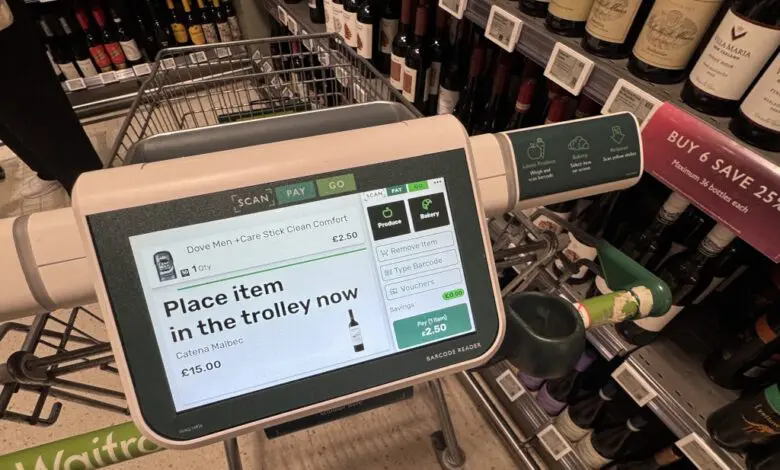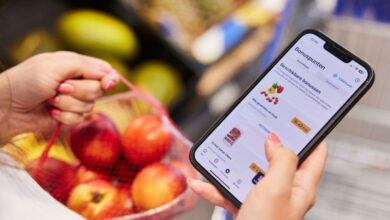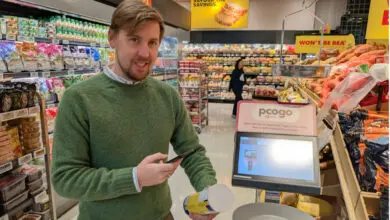Waitrose trials Shopic’s clip-on devices

British supermarket operator Waitrose is trialling Shopic’s clip-on devices for shopping trolleys for the first time at a store in Bracknell. Toby Pickard, Retail Futures Senior Partner at the British Institute of Grocery Distribution (IGD), told The Retail Optimiser that, according to sales staff, the solution has been in use there for a few weeks. This is the first installation of the Israeli supplier’s technology in the United Kingdom. In November last year, French retail group Les Mousquetaires also started a trial at Intermarché, as reported by The Retail Optimiser.
Shopping with a Shopic device at the trolley at Waitrose is hassle-free, reports Toby Pickard. Customers can find the Shopic devices at a dispensing station at the store entrance. Using the My Waitrose app, they can unlock a device and insert it into the special holder on the shopping trolley. The shopper scans the selected products with a barcode scanner built into the bottom of the screen and then places them in the shopping trolley. If they want to put an item back, they can remove it from the basket via the screen.
Weight-based items must first be weighed on the self-service scales. Shoppers then scans the barcode generated there into the Shopic system. Bakery items that do not have a barcode can be registered via a selection menu on the screen. At the end of their shopping trip, customers pay by card or contactless at a self-service terminal.
Zebra handheld scanners still in use
Waitrose has installed 32 Shopic systems in its Bracknell store. Alternatively, customers can also use Zebra handheld scanners, which the retailer usually provides in its stores for self-scanning. In addition to the larger screen of the Shopic systems, the main advantage for customers is that they have both hands free for shopping. Apart from that, the handling of both solutions is very similar.
Shopic advertises that the systems with their built-in cameras can identify products using computer vision when they are placed in the trolley, thus eliminating the need to scan barcodes. Waitrose is obviously not currently using this option. So far, there is no evidence that the technology works quickly and reliably enough, even with large product ranges. However, it can help to identify possible discrepancies between the contents of the shopping trolley and the scanned items.
Deeper insights into purchasing behaviour
Toby Pickard cites the trial with Shopic as another example of how retail companies are testing new technologies to drive digitalisation in their stores, explaining: “Retail companies need to accelerate their investment in technologies that digitise the physical store to create a hyper-connected environment. This gives them access to unique data and insights that they can use to increase their efficiency and profitability.”
In addition to providing insights into how customers move around the sales floor, smart shopping trolleys offer a number of other advantages. For example, retailers can use their screens for product advertising or recommendations. They also offer better opportunities to display detailed information on nutritional value, origin or possible allergens. Furthermore, they can help customers find their way around and serve as a navigation system in the sales area.




